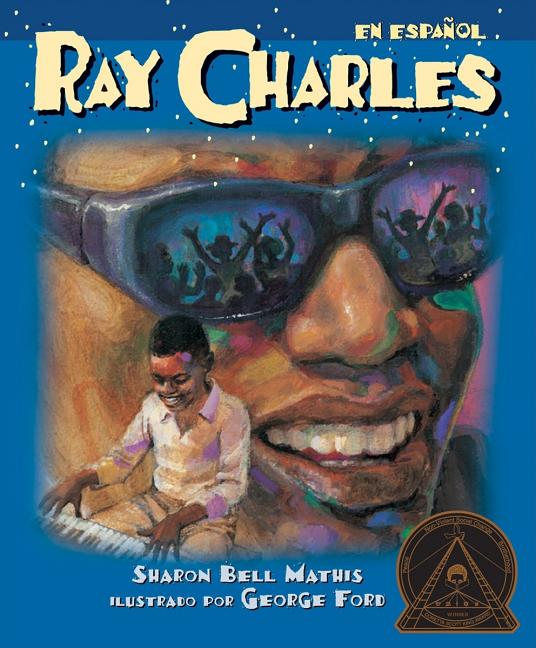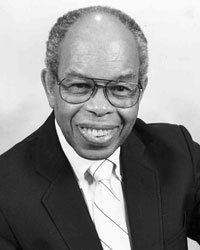Meet-the-Illustrator Recording with George Ford
Ray Charles |
George Ford introduces and shares some of the backstory for creating Ray Charles.
Translate this transcript in the header View this transcript Dark mode on/off
George Ford: Hello. I'm George Ford. I am the illustrator of the book, Ray Charles.
This book was done in 1973. Before this, biographies were usually of historical figures, older figures. There was need for biographies of more contemporary figures, especially Black figures, and especially popular ones, to interest children in reading.
Now, I was approached because there were not many Black illustrators at the time. It was at a time when most of the illustrations would be in black and white, because books were not all done in color then. I was determined that somehow in the book I would show something about the discrimination that Ray Charles faced, so this would be my subject matter.
The biography was there, very beautifully written by Sharon Bell Mathis. It was short. It was very direct and very simple, telling about how Ray Charles became blind as a child and, through many vicissitudes, he practiced piano through the work of his neighbor next door. And through him, he began pounding on the piano as a child. His mother died at the age of fifteen. He then traveled to Seattle where he met Quincy Jones and many other people, and where he realized he was going to be a musician.
In doing illustrations, you have to choose what parts of his life to illustrate. And in one picture near the end of the book, there's a scene in which he refused to play before a segregated audience. Now that's the kind of incident I would want to include. He refused to play, and I show, on the stage, Ray Charles is walking towards us with his musicians behind him, with the audience in the background. So, in this case, I chose to be the person on the stage as Ray Charles is walking towards me. I see his face. I see him pointing out, directing these men to leave, and this is the composition that I decide on for that picture. I knew I had to do that because this was important in terms of the social significance of what he was about. And also, it gives me a chance, looking out from the stage, to show the faces of the audience as they're reacting. Of course, it's very general.
Finally, for those who would wonder just how the pictures were done: they look as if they were done with charcoal, and they were not. What I did was use a rough-textured paper, which, when you draw on it, whether you draw with pencil or whether you use wash, it always looks rough, as if it's done with a dry charcoal.
So I often use a wash made with black watercolor paint, which is watered down to create a gray tone. In some instances, where I wanted it to be a little bit rougher-looking, I would actually use the pencil and over that would just use a dry brush. And when you draw it on the paper, it shows black but it does not look like it's a wash. It doesn't look like watercolor. But it's really black watercolor with most of the water flicked out of the brush so that the brush has some paint in it, but it's really not very wet.
With the other parts, smoother with the wet wash. And that gives variety in the way that the black and white looks on the page. You can see quite a bit of variety can be gained by using just one color, black, and using two techniques, very wet wash and at the same time dry brush and pencil, thick pencil.
I'm really appreciative of the fact that this book has been reissued, and I'm glad that many more of you will get a chance to see what the technique was like in the years before color was so popular in children's books.
This Meet-the-Illustrator Recording with George Ford was exclusively created in May 2009 by TeachingBooks with thanks to Lee & Low.




